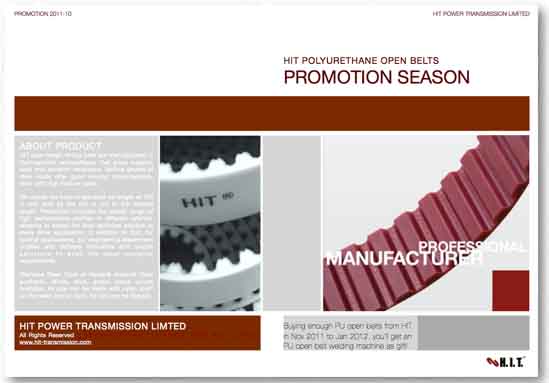 Carbon tensile cord increases power rating.
Carbon tensile cord increases power rating.
Where formerly roller chains or gearboxes were used, the engineer can now employ the Poly Chain GT Carbon, a flexible and lightweight synchronous drive with carbon tensile cord that will provide considerable energy savings.
In conventional Poly Chain belts, tensile cords from aramid are used to provide the necessary tensile strength and flexibility. Now, the materials development specialists from Gates laboratories have incorporated a highly fatigue-resisting tensile cord in the belt which is made of a new polyurethane compound. The superior strength of carbon fibres is known from aviation technology and from rigid drive components. From now on, the engineer can utilize the advantages of these fibres in synchronous drives as well.
The carbon tensile cord of the Poly Chain GT Carbon belt guarantees the transmission of high power in a very small space. Reverse bending strength is excellent, and impact resistance is also better than that of aramid.
At the same time, the stretch of the belt is virtually zero, resulting from the high E-module of carbon fibres. As a result, the tensioning of the belt remains constant during the whole service life (provided drive installation is correct) and the engineer can save space as well: The high power density allows for the use of narrower belts, and the optimised fatigue strength is the key to the use of smaller pulleys.
Even at high dynamic loads the new belt provides very high power rates. The same is valid for low speed, high torque applications. Thus, Poly Chain GT Carbon is suitable for a variety of applications. The ribbed belt back improves flexibility and back idlers can be used where required; the basic belt consists of a newly developed, lightweight polyurethane compound which is chemically resistant and ensures optimum connection with the carbon tensile cord.
In the laboratories as well as in service, Gates is already able to prove that the power density of Poly Chain GT Carbon is better than that of conventional roller chains and reaches the level of gearboxes. Thus, the new belt drive can replace much more complex types of drive systems. In comparison to conventional belt drives it saves space. To transmit the same power, a rubber belt of 85 mm width is required or a 37 mm polyurethane belt ?or just a 20 mm Poly Chain Carbon belt.
In a United Kingdom water utility, the belts have already been replaced. In this example, the 30kW fan drive was driven by four 4SPA belts. The plant is running 24 hours per day, seven days a week and 50 weeks in the year. Motor efficiency is 94 percent. At energy costs of 6,65 Cent per kWh and a replacement of the belt twice a year total operational costs of the drive amount to 18,165€ per year. If a roller chain was used, it would be even higher because of the service cost for retensioning and lubrication.
For the replacement of the belts by a Poly Chain GT Carbon drive, a single 12 mm Poly Chain GT Carbon 14MGT belt was sufficient which needs replacement just once in three years. As a result, total cost is reduced by 3,270€, in spite of the slightly higher investment and this impressive number refers to one single drive in a period of just three years. In the given example, 60 drives of that kind were replaced, resulting in yearly savings of 196,200 € representing 20 percent of the total cost.
A huge amount of these savings is due to the fact that synchronous drives are slip-free and thus offer the possibility of a much more accurate speed control provided that the drive is able to operate within its optimum efficiency range. In practice, this leads to an increase in efficiency of about 8 percent.
- October 2021/Visit HIT at Cemat Shanghai China
- June 2021/Visit HIT at SNEC Shanghai China
- August 2020/Visit HIT at SNEC Shanghai China
- August 2020/Visit HIT at LGGB Guangzhou China
- April 2019/Visit HIT at Hannover ▪ Germany
- November 2018/Visit HIT at PTC Shanghai China
- April 2017/Visit HIT at Hannover ▪ Germany
- March 2017/Visit HIT at IFPE 2017
- July 2016 / HIT Timing Belt Pulley
- June 2016 / More profile ranges of HITPOWER®
- More

